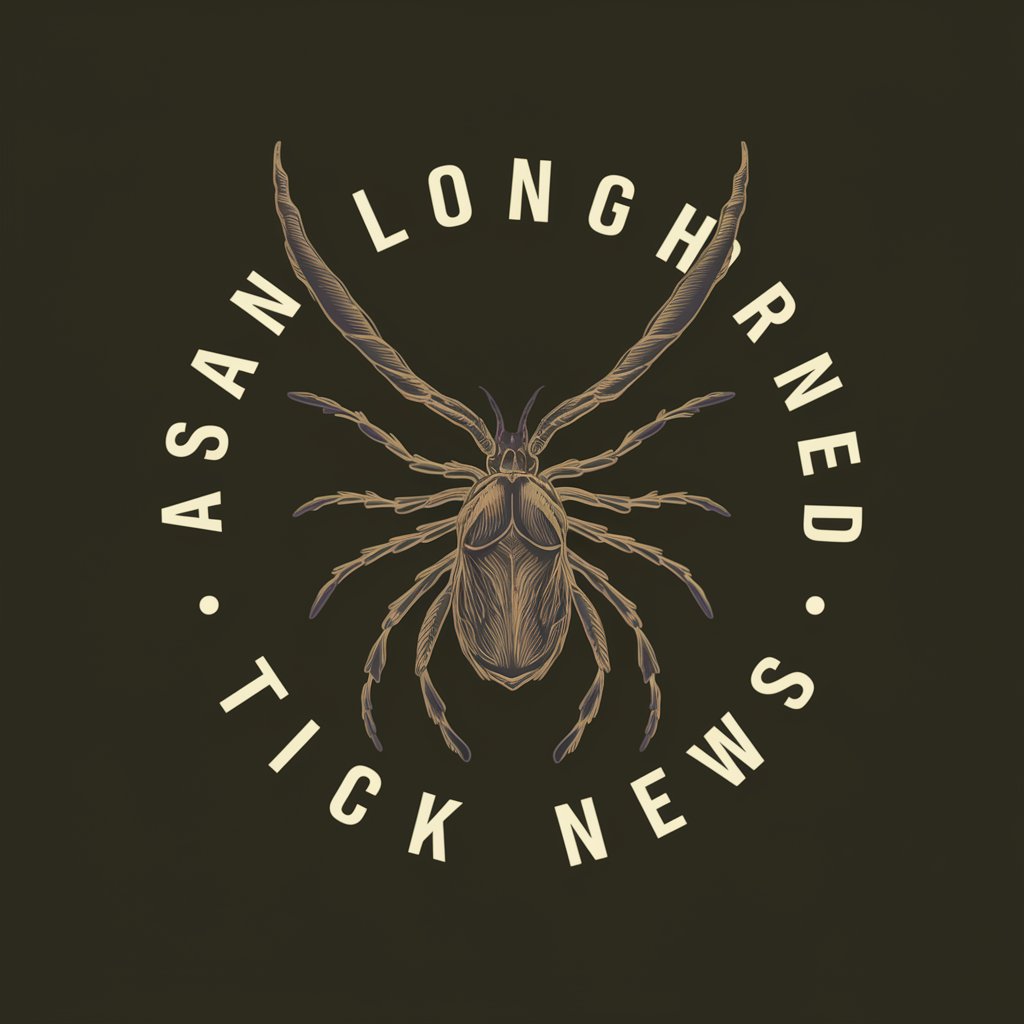Asian Longhorned Tick - Asian Longhorned Tick Insights

Stay informed about the Asian Longhorned Tick.
Stay informed about the Asian Longhorned Tick with AI-powered updates.
Provide the latest updates on the spread of the Asian Longhorned Tick in the United States.
Explain the health risks associated with the Asian Longhorned Tick and preventive measures.
Detail the impact of the Asian Longhorned Tick on local wildlife and agriculture.
Summarize recent research findings about the Asian Longhorned Tick and its behavior.
Get Embed Code
Overview of Asian Longhorned Tick
The Asian Longhorned Tick (Haemaphysalis longicornis) represents a significant concern due to its ability to rapidly establish and proliferate in new environments, as evidenced by its expansion across various states in the United States. Not previously established in the U.S., this tick species is a notable livestock pest in regions like the Australasian and Western Pacific. It's characterized by aggressive biting behaviors, leading to intense infestations that can result in significant stress, reduced growth and production, and severe blood loss in domestic hosts. A remarkable aspect of this tick is its capability for parthenogenetic reproduction, allowing a single fed female to create a population independently. The Asian Longhorned Tick is a known or suspected vector for various pathogens affecting livestock and humans, spreading diseases across a wide host range . Powered by ChatGPT-4o。

Main Functions and Applications
Real-time Updates on Spread and Establishment
Example
Providing updates on the confirmed local populations of Asian Longhorned Ticks across states and counties, such as in Virginia, West Virginia, and North Carolina, among others.
Scenario
Public health officials and researchers use this information for strategic planning in tick control and disease prevention efforts.
Health and Safety Advisories
Example
Issuing advisories regarding the tick's role as a vector for diseases, highlighting its impact on both livestock and human health.
Scenario
Farmers, pet owners, and the general public benefit from guidelines on preventing tick bites and managing tick populations in their vicinity.
Ecological Impact Analysis
Example
Analyzing the tick's ecological impact, including its effects on local wildlife populations and its role within ecosystems.
Scenario
Conservationists and environmental scientists use this data to understand broader ecological changes and the impact on biodiversity.
Target User Groups
Public Health Officials
These professionals are concerned with monitoring and controlling the spread of tick-borne diseases. They rely on timely and accurate information to issue public health advisories and to coordinate response efforts.
Farmers and Livestock Owners
Given the tick's severe impact on livestock, these users benefit from understanding risks, preventive measures, and treatment options to protect their animals and livelihoods.
Outdoor Enthusiasts
Individuals who spend significant time in tick-prone environments need up-to-date information on tick activity for personal protection and to minimize disease risk.

Usage Guidelines for Asian Longhorned Tick
Start with a free trial
Begin by visiting yeschat.ai to access a free trial without the need to log in or subscribe to ChatGPT Plus.
Identify your information need
Determine the specific information you require about the Asian Longhorned Tick, such as its spread, impact, or prevention methods.
Consult authoritative sources
Utilize provided documents and updates from reputable sources such as CDC, state health departments, and academic research to gather current data.
Apply the information
Use the information obtained to make informed decisions or take preventive measures against the Asian Longhorned Tick in your area.
Stay updated
Regularly check for new updates or research findings about the Asian Longhorned Tick to stay informed about any changes in its spread or management recommendations.
Try other advanced and practical GPTs
Asian Style Art Builder
Crafting Asian Elegance with AI

Asian Future Insights
Unlocking Asia's Economic Potential with AI

Asian food Culinary Explorer
Discover, Cook, and Savor Asian Cuisine with AI

Culinary Coach - South Asian 🍛
Discover the art of South Asian cuisine, powered by AI

Asian Food Supplies Assistant
Your AI-powered guide to Asian cuisine.

Asian Cuisine Guide
Discover and Explore Chinese Cuisine with AI

Asian Mom
AI-powered traditional wisdom at your service.

Social Media Muscle Power Manager
Empowering Your Social Media with AI

Ponder
Illuminate Your Inner Thoughts

Pixel Ponder
Empowering visual creativity with AI

Fitness Power
Empowering your fitness journey with AI

Ponder Partner
Empowering Learning with AI Creativity

Detailed Q&A about Asian Longhorned Tick
What is the Asian Longhorned Tick?
The Asian Longhorned Tick (Haemaphysalis longicornis) is an exotic tick species from East Asia, first reported in the United States in 2017. It's a serious livestock pest in regions it's endemic to, capable of aggressive biting and causing significant stress and blood loss in domestic hosts.
How does the Asian Longhorned Tick reproduce?
This tick species can reproduce parthenogenetically, meaning a single fed female can produce offspring without mating, allowing for rapid population increases.
What diseases can the Asian Longhorned Tick spread?
It's a known or suspected vector for several pathogens affecting livestock and humans, including viral, bacterial, and protozoan agents, although the full extent of its role in transmitting diseases in the U.S. is still under investigation.
Where has the Asian Longhorned Tick spread in the United States?
As of February 2023, it has established populations in multiple states, including but not limited to Virginia, West Virginia, North Carolina, New Jersey, Pennsylvania, New York, and Maryland.
How can one prevent and control the spread of the Asian Longhorned Tick?
Preventive measures include regular tick checks on pets and livestock, managing wildlife that may harbor ticks, using tick repellents, and maintaining landscapes in a way that minimizes tick habitats.
